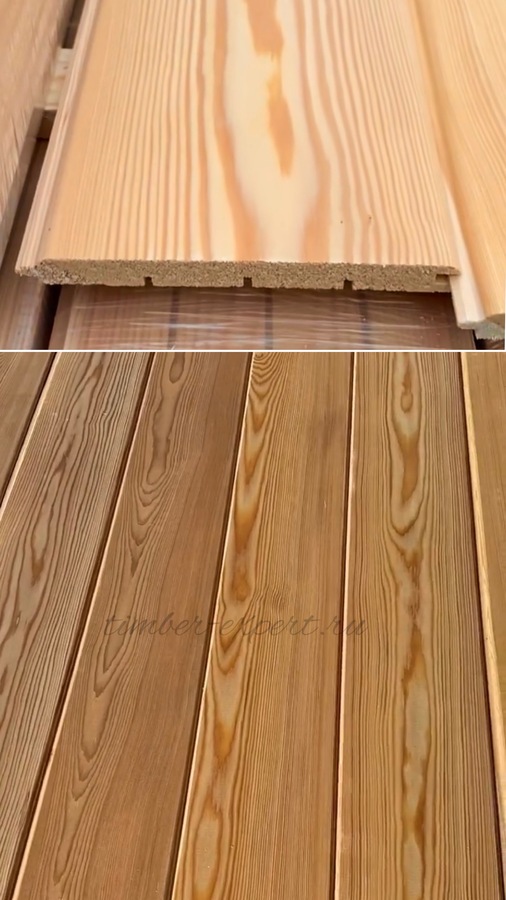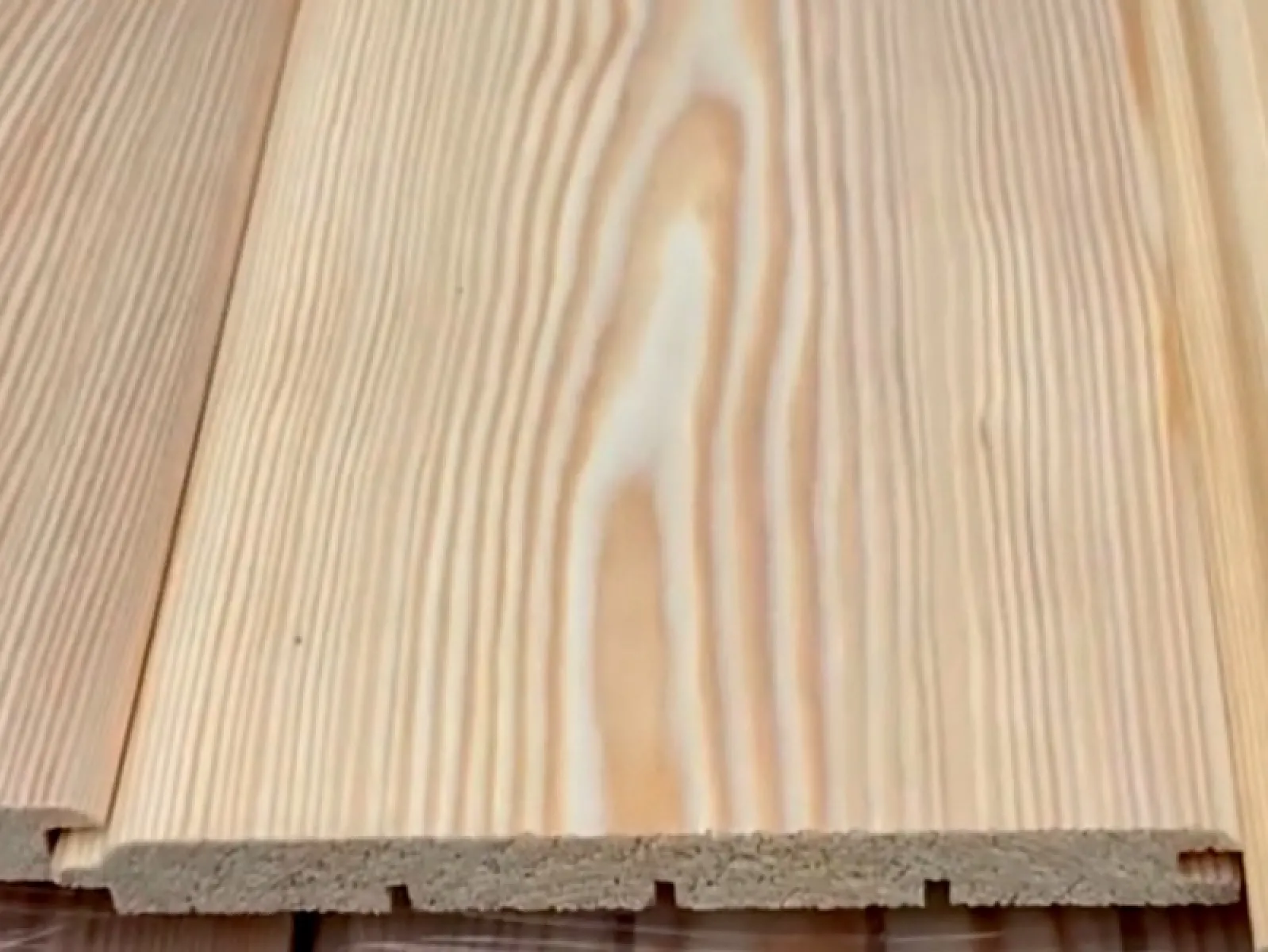Siberian Larch Tongue & Groove cladding Timber Expert
Siberian Larch Tongue and Groove - A Perfect Solution for Your Interior
Looking for a unique and high-quality interior material for your home? Have you considered using Siberian larch cladding? This material merges an appealing look with dependability, providing a cozy microclimate indoors. Now, let's delve deeper into what makes Siberian Larch T&G the perfect choice.
Unleashing Elegance and Durability: Siberian Larch T&G Cladding, the Quintessential Interior Marvel
Unearth the power of Siberian Larch Tongue and Groove (T&G) Cladding. This natural and sustainable material can transform any space into a warm, inviting, and stylish area.

What is Siberian Larch Tongue and Groove Cladding?
Cladding, in its essence, is a type of skin or covering for your walls. Siberian Larch Tongue and Groove Cladding is a specific type made from the larch trees native to Siberia. The name "tongue and groove" refers to the method of fitting these pieces together, creating a seamless, efficient, and attractive design.
But why should you opt for Siberian larch tongue and groove cladding? It’s not just about the wood's durability, but also its striking aesthetic appeal. The rich color variations in the wood grain range from pale yellow to a deep, rustic gold, offering a warm and inviting ambiance to any space it graces.
The tongue and groove method of joining the cladding also adds to its appeal. It creates a uniform, clean look that feels modern and sophisticated, and also improves the overall strength of the cladding.
Understanding Siberian Larch Tongue and Groove (T&G)
Key Characteristics
Siberian Larch T&G is characterized by a unique tongue and groove joint with rounded edges, promising a flawless and straight-facing finish with no gaps, warps, or warping. The thickness of this board is typically 15mm, keeping it lightweight and stress-free for your walls and ceilings. Doesn't the idea of having the natural look and pleasant aroma of solid Siberian larch beams in your home sound appealing?
The Importance of Choosing the Right Battens for Exterior Applications
Selecting the appropriate exterior cladding material involves several considerations, such as humidity, temperature, sun exposure, and other weather-related factors. Choosing inappropriate linings can lead to enduring issues like warping.
What is Warping and Why is the Size of the Tongue and Groove Important?
Warping refers to the deformation of wood due to changes in moisture and temperature. It results from the structure of wood; moisture and heat cause wood fibers to expand and contract, leading to material distortion. The tongue and groove size in larch linings is specific: the tongue in this case might be too thin and not robust enough for a stable connection under the influence of humidity and temperature variations.
For this reason, despite their aesthetic appeal and excellent quality for interior work, this particular type of T&G cladding like larch veneer cladding is not recommended for exterior use. They may not be able to withstand aggressive weather conditions, swell with moisture or, conversely shrink.
At Timber Expert Woodworking, we aim to provide our customers with the best and longest-lasting materials for building and finishing. Unlike many companies who only offer what they have in stock, we produce materials to order, based on each client's needs and desires.
Whether we produce larch cladding, decking, flooring - each product is crafted to a high-quality and durability standard. We are not limited to a predetermined range of products, so we can offer a wider selection of solutions for your projects.
That's why we do not recommend the use this particular T&G cladding profile for external finishing. Our goal is to assist you in selecting the most suitable and durable material that will serve you for decades. We are always ready to discuss your needs and offer the best solutions for every project!
Siberian Larch Tongue and Groove Cladding and Sustainability
In an era where sustainability is not just a buzzword but a necessity, Siberian Larch cladding shines through. Larch trees grow abundantly in the Siberian region and are harvested in a manner that ensures a minimal environmental footprint. Furthermore, the longevity of the wood reduces the need for replacement, contributing to its sustainability.
Maintaining Your Siberian Larch Tongue and Groove Cladding
One of the greatest advantages of Siberian Larch T&G Cladding is its low-maintenance nature. However, that doesn't mean it should be entirely neglected. Regular cleaning and an occasional reseal can keep your cladding looking like new for decades.
Cleaning the Cladding
Dust and dirt can accumulate on the surface of your cladding over time. Use a soft brush or vacuum with a brush attachment to gently clean the surface. For stubborn dirt, a damp cloth with a mild soap can be used.
Resealing the Cladding
Depending on the finish of your cladding, you may need to reseal it every few years. This can protect the wood from moisture and UV rays, helping to maintain its vibrant color and durability.
Choosing the right cladding material for your home's exterior can make a significant difference in both aesthetics and longevity. While Siberian Larch T&G is an excellent choice for interior applications, the challenges it faces in exterior conditions make alternatives like planking and quarter board more viable. Always consider the specific requirements of your project and the conditions it will face over the years.
FAQs
1. What is Siberian Larch T&G? What does 'tongue and groove' mean?
Siberian Larch Tongue and Groove (T&G) is a unique type of board profile characterized by a tongue and groove joint with rounded edges. It's an excellent choice for indoor applications.
2. Why is the size of the tongue and groove important?
The size of the tongue and groove is crucial for a stable connection, especially under the influence of humidity and temperature variations. Too thin a tongue might not provide a robust enough connection.
3. Why is Siberian Larch T&G not suitable for exterior use?
While aesthetically appealing, Siberian Larch T&G may not withstand aggressive weather conditions. It might be subject to swelling from moisture or shrinkage.
5. Why is it important to discuss your project needs with the lumber provider?
Different projects have different needs, and a one-size-fits-all solution may not work. Discussing your specific requirements with your lumber provider can help you choose the most suitable and durable material for your project.
6. What is the lifespan of Siberian Larch Cladding?
If properly maintained, Siberian Larch Cladding can last several decades, sometimes up to 50-60 years.
7. How do I maintain my Siberian Larch Cladding?
Regular cleaning and occasional resealing can help maintain the look and longevity of your Siberian Larch Cladding.
8. Is Siberian Larch Cladding sustainable?
Yes, Siberian Larch is harvested in a sustainable manner, and its long lifespan also contributes to its sustainability.








